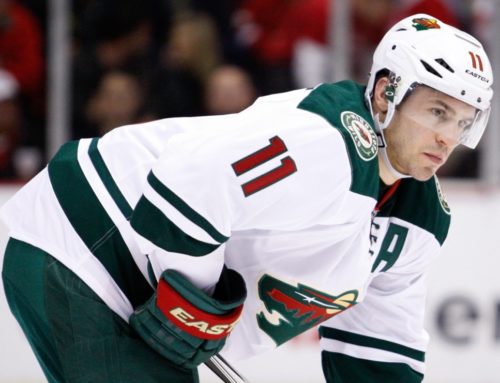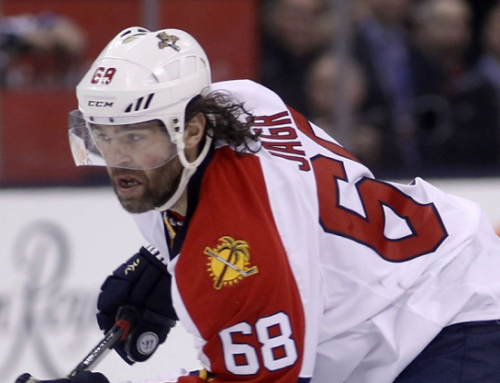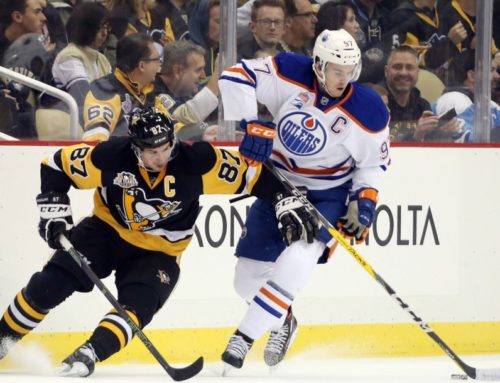
A data dump on the utility of rookies when rebuilding in a keeper league.
Last week I created an article about a proposed rebuilding strategy of selecting strictly from the top rookie list. It luckily wasn't published and it gave me time to critique myself and my assumptions of the strategy.
To summarize, an owner in my keeper league told me that he was thinking of drafting from the available rookies on the top rookie list from this past season. He thinks that he could wait out any jinxes or other developmental years and in four years he will have a core for competing against the top owners.
This does not mean that he was going to be picking from the NHL's new Entry Draft crop. Only guys who are in the league and playing right now. Here is a list of the top 60 rookies from last season (ranked by points):

Player names in yellow denote defensemen, Point Per Game (PPG) values that are above 0.50 are in green (The deeper the color the better the value).
My starting assumptions were that:
a) Some of these players are likely to be taken in your keeper leagues because of the information provided in advance of their Entry Draft. Guys like MacKinnon are taken before they even play a game. Of the list provided, 14 players are already gone in my league. I excluded guys like Crosby because they too would likely have been taken before playing a game.
b) Ranking and selecting from the remaining players by using PPG has faults
c) I would analyze the 2005-06 crop of rookies thinking that since it was the first year back from the lockout and under the rules of the C.B.A. rookies had a good chance of playing because they were cheaper to pay.
d) I broke down their performance in categories called, “Next Four Seasons” and “Career Since Rookie”
e) Lastly, that if you pick one of these players, in order to be successful long term the player must improve upon their performance in their rookie year. These players that still generate points but to a lesser extent have put you back because of the opportunity cost of not selecting a veteran in exchange for their potential.
My initial conclusions were that about one third would be successful selections, one third would produce at the same range and the other third would be bad selections. Also that defensemen were erratic to predict.
Here is where I had a problem with my own conclusions:
a) I based it on one set of rookies (2005-06). Now I base it on the rookies from 2005-06 through to 2007-08.
b) The way I evaluated the Next four Seasons was okay but could be enhanced.
c) The way I evaluated the Career Since Rookie category needed to change.





The Next Four Seasons could be breakout and/or developmental years. The GP values in red mean that the player did not play enough games to have a worthwhile short term impact, values in orange could be that they were still being developed. The PPG values that are in blue fill mean that they performed worse than their rookie season, the ones filled in red mean that they did better. The strength of those fill colors indicate how strong of a difference it was. No fill meant that they were performing at about the same level.
The Career Since Rookie category raw data is still the same by I now look at how the player trended compared to their Next Four Seasons PPG value instead of the Rookie Season PPG. Red GP values means that the player did not play enough games to have a long term impact. Points per game values filled in purple mean that the player trended downward and values filled in orange meant they went upwards. Again, no fill meant they performed at about the same level.
Out of the 144 players evaluated only 10 players trended upwards ( Steen, Kessel, Tlusty, Kunitz, Seabrook, Perry, Goc, Filppula, Niskanen and Letang). There were 25 players trending downward. The remaining 109 played at about the same level.
Based on the Career Since Rookie PPG, 62 players had half a point per game or better values. Of those 62 players six did not play enough games to really have an impact (Ryan Whitney, Ouellet, Wolski, Radulov and the Kostitsyn brothers).
Defensemen continued to prove they were hard to predict. There were only eight defensemen out of 36 and 47 out of 108 forwards that had a PPG value better than 0.50. If you factor out the defensemen then there was about a 44% chance that a forward could have been helpful for an owner. Much better than the 33% I had initially determined.
While the owner in my league might not have a core of players that can compete with the top owners, he could strengthen his team and with a few deft moves he could swap some rookies (with potential upside) at the three or four year mark for vets and get his team into the fight.
Thankfully, I took a second look at this and now I won't make a rookie mistake.





 EDM
EDM FLA
FLA NYR
NYR ANA
ANA MIN
MIN MTL
MTL DET
DET CAR
CAR
